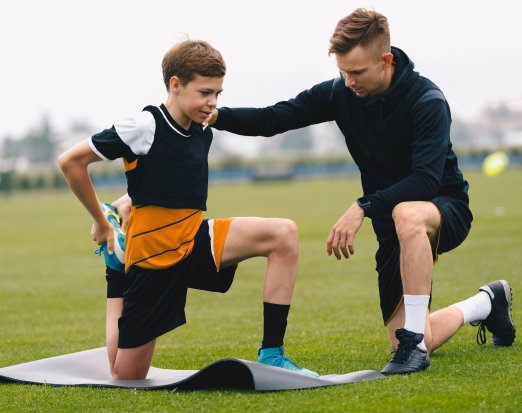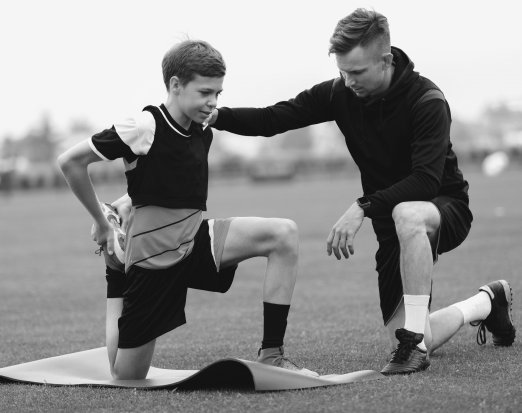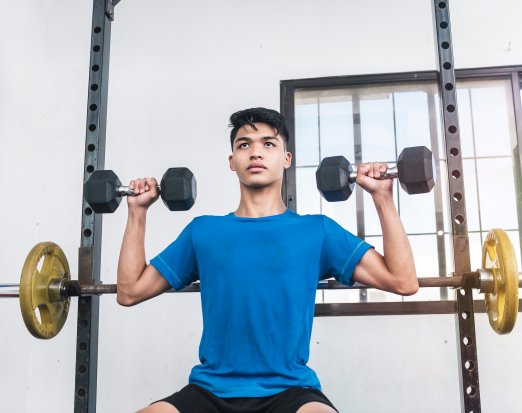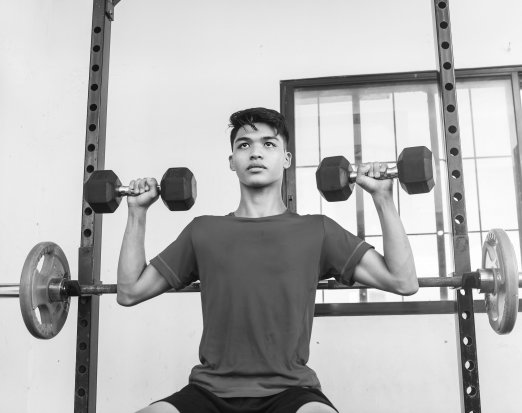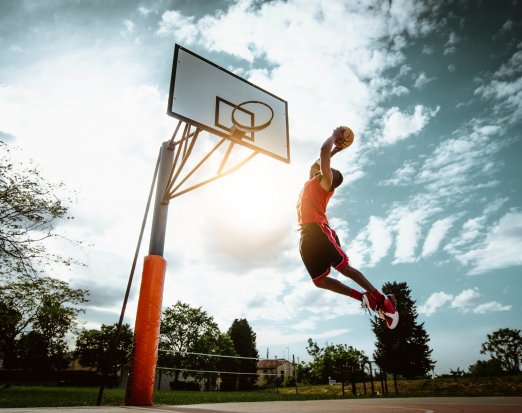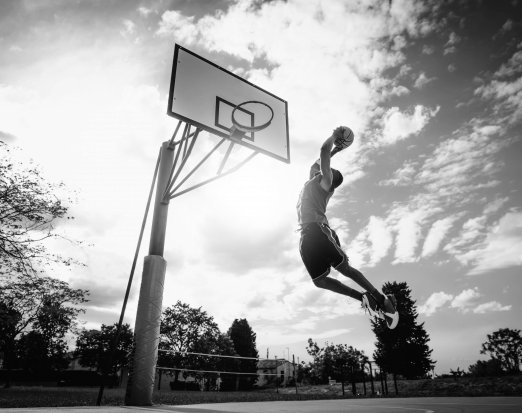Track Relative Strength to Reduce Injuries and Improve Sport Performance
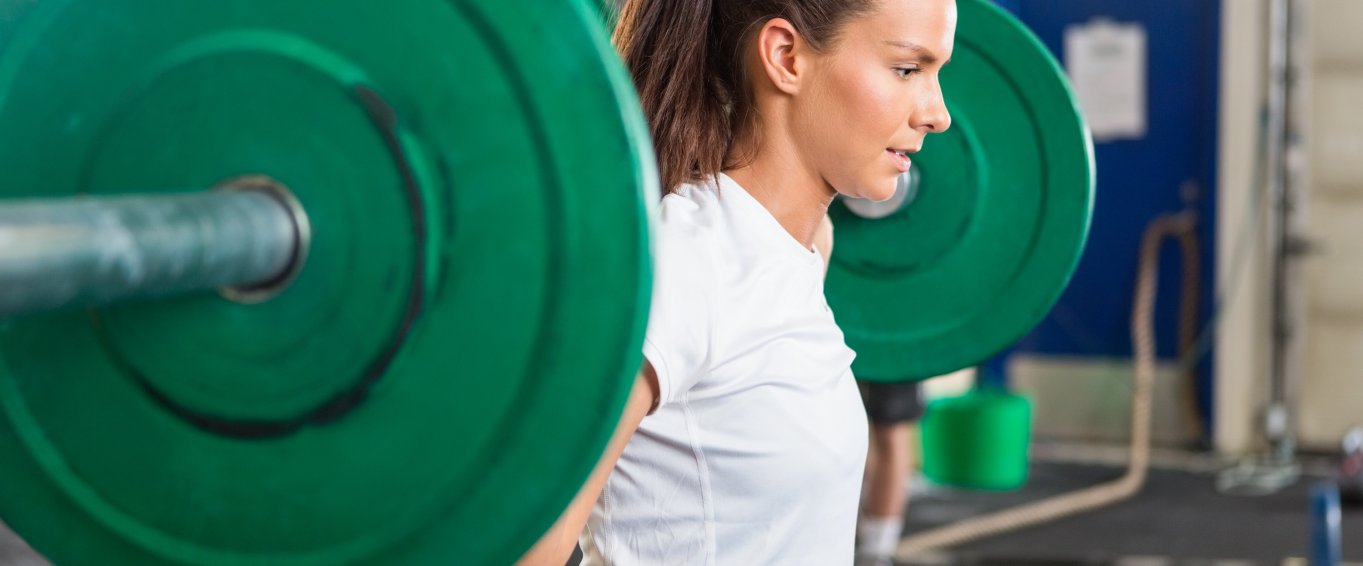
Sports consists of many athletic movements, for example, short sprints, various jumping actions, and quick changes of direction. This has led researchers and coaches to investigate different sports with the aim to quantify a range of performance characteristics including the number of acceleration and high-speed sprints, jump ability, agility, and change of direction players complete within a game.
As these performance qualities are fairly easy to test and track without the need of expensive equipment (5-metre, 10-metre, 20-metre sprints, countermovement jump, 5-0-5 agility) - research papers are full of acceleration and agility times, along with jump heights, with the idea that better acceleration, agility, and jump results will potentially identify talented athletes, especially youth athletes, and translate to sport performances.
Regularly assessing and collecting athlete’s performance outputs (sprint, jump, and agility) is highly recommended throughout the athlete’s development, as this will help to compare performance both in the short-term (throughout a sport season) and long-term (as the athlete grows and matures). This is an important consideration within a long-term athlete framework and programme (20).
Along with sprint, jump and agility tests, other areas of fitness, which may be linked to performance and injury reduction, have been suggested to track. This includes core stability, flexibility, movement screens, and strength levels. Core stability, which is challenging to both define and test, has led to inconsistent results. This may be a major reason why there is little evidence suggesting that core stability will help with performance and injury reduction (8, 17, 18, 22). Additionally, movement screens, which assesses a series of functional movements and mobility, shows little evidence that they can predict performance or help reduce injuries, especially in youth athletes (6). Flexibility or stretching is frequently used in warmups and cool downs to hopefully improve performance and reduce injuries. The challenge with stretching, especially static stretching, is that there is a difference between static range of motion and dynamic range of motion, with the latter being influenced through elastic components and neurological relaxation strategies. Therefore, it is difficult to know the effect of stretching to aid performance and in reducing injuries (19).
Moving onto an athlete’s strength level, strength is a central quality in an athlete’s development, which can be trained from an early age (12) and seems to aid in the development of other fundamental movement skills (4). Moreover, strength is required as a functional quality for the other performance tests – consider that most of the performance tests are assessing the acceleration of the athlete’s bodyweight, thus the greater the strength (force) the athlete can produce, relative to their bodyweight, the greater the acceleration or change of acceleration which generally equals an improvement in performance. Furthermore, it seems that a certain level of strength may help athletes to reduce the risk of injury, especially lower limb injuries (1, 3).
There are many strength tests which have been used to calculate an athlete’s strength level. The back squat has been frequently used due to its multi-joint action, recruitment of the lower body musculature along with contribution of the trunk and upper body. Another important consideration regarding strength levels, is the way that strength is recorded – usually absolute or relative. Absolute strength is the maximum load lifted, whereas relative strength assesses the maximum load lifted compared to the athlete’s bodyweight. Studies have reported correlations between absolute strength and sprint performances (5), but its seems that relative strength is a superior way to monitor strength levels - sprint performances and jump ability (2, 13).
Relative Strength – Changes with Maturation
It is well documented that early adaptations to strength training are neurological (21), this may explain why neuromuscular type training has positive outcomes with youth athletes. As the youth athletes mature, girls ~9-11 years, and boys ~13-15 years age, both groups experience a rapid change in height (peak height velocity), and bodyweight (peak weight velocity) (16). This rapid change in bodyweight can reduce the athlete’s relative strength ratio – frequently reported in females, as females mature early that young males, produce less circulating growth hormones, which are associated with increases in muscle mass, and may increase their body fat percentage compared to lean body tissue (14). It is, therefore, extremely important to consider relative strength levels alongside maturation.
Short- and Long-Term Monitoring of Strength Levels
As a part of a long-term athlete development programme, we highly recommended that relative strength is monitored both with short-term and long-term thinking. Before the start of a sporting season, athletes should complete a preparation phase of training, as this will help the athletes to cope with demands of the sport. Generally speaking, for example in youth football, the athlete’s relative strength levels will decrease throughout the season with the aerobic capacity improving. The reduction in relative strength may also affect their sprint and agility performance (7). This may happen for many reasons – a lack of direction for athletes to maintain their strength levels or a change in focus from physical preparation to sport tactical skills.
Furthermore, from a long-term perspective, athletes should focus on developing or maintaining their relative strength, year on year. The athlete’s strength level is not linear, and will fluctuate as their mature, as previously mentioned. It is also noteworthy to mention that within peak-height velocity and the rapid changes in height the athletes can experience a reduction in coordination (9, 15), which may affect both their coordination and strength levels.

In studies investigating relative strength and injuries report that stronger athletes were less likely of sustaining an injury. For example, in a study that tested college athletes’ relative strength in a back squat report that athletes with a lower relative strength ratio, for males <2.2, and female <1.6, were more likely to sustain a lower limb injury (3). This is also consistent and aligned with the long-term (2+years) trainability of strength in youth athletes and adolescents (~2.0 times bodyweight for 16–19-year-olds, ~1.5 times bodyweight for 13–15-year-olds, and ~0.7 times bodyweight for 11–12-year-olds), with younger athletes focusing on skill development, coordination, and balance (10).
Training to Improve your Relative Strength
Strength training is an important mode for youth athletes to learn and practice. Younger athletes, before peak-height velocity, will gain positive adaptations from bodyweight training, medicine ball drills, and plyometrics. As the athletes mature, they need to experience further strength training but with the aid of barbells and dumbbells (freeweights), as this will increase the mechanical stress on the system leading to greater neuromuscular adaptations.
As strength training should be a regular part of the athlete’s long-term programming, there is no rush in their development. Once the athletes are mature enough to follow instructions, they can start to learn the fundamental lifts – squats, lunges, deadlifts, rows, and presses. In a meta-analysis, looking at effective strength training for youths suggested that athletes should complete 2 strength sessions per week, containing 6 – 8 exercises (free weights) with loads of 85%+ 1RM (11).
By understanding these guidelines, the athletes can gradually increase both their skill and strength levels. As previously mentioned, the athletes can start with bodyweight and medicine balls which will develop neuromuscular connections, balance, and coordination. As they mature and develop their skill, the athletes can progress onto barbells and dumbbells, which will drive further skill development.
By Incorporating short- and long-term planning, the athletes, along with their coach, can set goals to both develop and maintain their relative strength levels. This will also help in prioritising the athlete’s training schedule, especially as their training schedules can get busy. By preparing the athletes for their sport (season), and through long-term tracking of relative strength, this will aid in sport performance and reduce the risk of injury, especially lower limb injuries.
Summary
The main role for a coach is to reduce the risk of injury and prepare their athletes for sport performances. The assessing and tracking of performances qualities -sprint, jump and agility are important, however, the regular monitoring and tracking of relative strength might be even more important due to the prophylactic (injury reduction) quality of stronger athletes. The ability for athletes to both tolerate higher forces and to generate higher forces is likely to reduce lower limb injuries and aid in movements, especially when the athletes are trying to accelerate their own bodyweight (sprints, jumps, and changes of direction).
Youth Strength & Conditioning Platform for Schools, Sport Clubs, and Academies.
Our platform helps to deliver effective training and tracks athletic progress and development, with the core objectives of reducing the risk of injuries and to promote both sport readiness and performance. The platform’s features include -
- Strength and conditioning tests and dashboard to monitor and compare athlete metrics
- Athlete app - athletes can discover new exercises and train independently
- Track data - monitor athlete’s training loads, RPE, and training adherence
- Reports - simply create squad, team, and individual athlete reports
- Full curriculum - follow a strength and conditioning curriculum with a library of session plans
References
- Augustsson, S.R., & Ageberg, E. (2017). Weaker lower extremity muscle strength predicts traumatic knee injury in youth female but not male athletes. British Medical Journal Open Sport & Exercise Medicine, 3, 1 – 8.
- Boraczynski, M., Boraczynski, T., Podstawski, R., Wojcik, Z., & Gronek, P. (2020). Relationships Between Measures of Functional and Isometric Lower body strength, aerobic capacity, anaerobic power, sprint, and countermovement Jump performance in Professional Soccer Players. J Hum Kinet, 75, 161-175.
- Case, M.J., Knudson, D.V., Downey, D.L. (2020). Barbell squat relative strength as an identifier for lower extremity injury in collegiate athletes. Journal of Strength and Conditioning Research, 34(5), 1249 – 1253.
- Collins, H., Booth, J.N., Duncan, A., & Fawkner, S. (2019). The effect of resistance training interventions on fundamental movement skills in youth: a meta-analysis. Sports Medicine, 5(17), 1 – 16.
- Comfort, P., Stewart, A., Bloom, L., & Clarkson, B. (2014). Relationships between strength, sprint, and jump performances in well-trained youth soccer players. Journal of Strength & Conditioning, 28(1), 173 – 177.
- Davies, K.F., Sacko, R.S., Lyons, M.A., & Duncan, M.J. (2022). Association between functional movement screen scores and athletic performance in adolescents: a systematic review. Sports, 10(28), 1 – 25.
- Emmonds, S., Sawczuk, T., Scantlebury, S., Till, K., & Jones, B. (2018). Seasonal changes in physical performance of elite youth female soccer players. Journal of Strength & Conditioning Research, 1 – 18.
- Greene, F.S., Perryman, E., Cleary, C., & Cook, S.B. (2019). Core stability and athletic performance in male and female lacrosse player. International Journal of Exercise Science, 12(4), 1138 – 1148.
- Hewett, T.E., Myer, G.D., & Ford, K.R. (2004). Decrease in neuromuscular control about the knee with maturation in female athletes. The Journal of Bone & Joint Surgery, 1602 – 1608.
- Keiner, M., Sander, A., Wirth, K., Caruso, O., Immesberger, P., & Zawieja, M. (2013). Strength performance in youth: Trainability of adlescents and children in the back and front squats. Journal of Strength & Conditioning Research, 27(2), 357 – 362.
- Lesinki, M., Prieske, O., & Granacher, U. (2016). Effects and dose-response relationships of resistance training on physical performance in youth athletes – a systematic review and meta-analysis. British Journal of Sports Medicine, 50, 781 – 796.
- Lloyd, R.S, & Oliver, J.L. (2012). The youth physical development model: a new approach to long-term athletic development. Strength & Conditioning Journal, 34(3), 61 – 72.
- Loturco, I., Pereira, L. A., Freitas, T. T., Bishop, C., Pareja-Blanco, F., & McGuigan, M. R. (2021). Maximum strength, relative strength, and strength deficit: relationships with performance and differences between elite sprinters and professional rugby union players. Int J Sports Physiol Perform, 1-6.
- Mansour, G.B., Kacem, A., Ishak, M., Grelot, L., & Ftaiti, F. (2021). The effect of body composition on strength and power in male and female students. BMC Sports Science, Medicine & Rehabilitation, 13(150), 1 – 11.
- Morgan, J.J., Sandercock, G.R.H., Ramirez-Campillo, R., Meylan, C.M.P., Collison, J.A., & Parry, D.A. (2017). Age-related variation in male youth athletes’ countermovement jump after plyometric training: a meta-analysis of controlled trials. Journal of Strength & Conditioning, 31(2), 552 – 565.
- Philippaerts, R.M., Vaeyens, R., Janssens, M., Van Renterghem, B., Matthys, D., Craen, R., Bourgois, J., Vrijens, J., Beunen, G., & Malina, R.M. (2006). The relationship between peak height velocity and physical performance in youth soccer players. Journal of Sports Science, 24(3), 221 – 230.
- Sharrock, C., Cropper, J., Mostad, J., Johnson, M., & Malone, T. (2011). A pilot study of core stability and athletic performance: is there a relationship? The International Journal of Sports Physical Therapy, 6(2), 63 – 74.
- Silfies, S.P., Ebaugh, D., Pontillo, M., & Butowicz, C.M. (2015). Critical review of the impact of core stability on upper extremity athletic injury and performance. Brazilian Journal of Physical Therapy, 19(5), 360 – 368.
- Thacker, S.B., Gilchirst, J., Stroup, D.F., & Kimsey C.D. The impact of stretching on sports injury risk: A systematic review of the literature. Medicine & Science in Sports & Exercise, 36(3), 371 – 378.
- Till, K.A., Jones, B., Darrall-Jones, J., Emmonds, S., & Cooke, C.B. (2015). Longitudinal development of anthropometric and physical characteristics within academy rugby league players. Journal of Strength & Conditioning Research, 29(6), 1713 – 1722.
- Tumkur Anil Kumar, N., Oliver, J.L., Lloyd, R.S., Pedley, J.S., & Radnor, J.M. (2021). The influence of growth, maturation, and resistance training on muscle-tendon and neuromuscular adaptations: a narrative review. Sports, 9(59), 1 – 24.
- Wirth, K., Hartmann, H., ickel, C., Szilvas, E., Keiner, M., & Sander, A. (2016). Core stability in athletes: a critical analysis of current guidelines. Sports Medicine, 47, 401 – 414.
